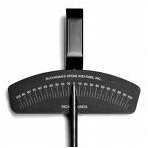(You really do have stamina if you have stuck with me this long. This is part 10 of a 16 part series on starting a competitive intelligence function in an organization. It is being written from the perspective of providing help to someone that has the interest in and responsibility of starting CI. Furthermore, I am concentrating on the human dimension throughout the series. After all, it is the people that make the difference. It’s The People, Stupid).
You are really rolling now. The organization is likely beginning to notice your efforts to start competitive intelligence. They are beginning to discern the shape and quality of what you are doing. Enough people are likely to be intrigued but some skepticism remains. Meanwhile, at least one senior strategy manager is familiar and supportive of your work. Great job!

Now it is time to ask for money.
It is a truism that business measures with money. Investments areas are allocated budgets. Potential returns are “dollarized.” Products are evaluated based on revenue. Headcount is translated to loaded costs. Everything comes back to the money that is spent or the money that is earned for the business.
The competitive intelligence function cannot (and should not) avoid being involved in these discussions since they characterize so much about what the organization values. Similarly, the use of money (“follow the money”) is a great way to understand another company’s priorities and strategies. Leonard Fuld says that the cardinal intelligence rule is “where money is exchanged, so is information.” Money often is a proxy for what is important internally and externally.
It should be no surprise that the CI function needs money (investments).
Read the rest of this entry

 I don’t know anyone that starts out their life with a personal vision statement like this one.
I don’t know anyone that starts out their life with a personal vision statement like this one. A couple of days ago a friend of mine called to borrow a specific tool. He was going to start a repair to his riding lawnmower and needed a torque wrench. He has a large number of tools already – screwdrivers, saws, sockets, pliers, drills, etc. – that he has previously used to make or repair things around his house. However, on this day and for this lawnmower repair project, he needed something that he did not already have. So what did he do? Well, he started with the first and most powerful tool that he had to find the tool that he was missing. He called someone that he knew. Now it turns out that I was no help that day since I didn’t have a torque wrench. However, if he secretly didn’t want to buy the tool, I could have easily connected my friend with someone else that had a torque wrench to lend.
A couple of days ago a friend of mine called to borrow a specific tool. He was going to start a repair to his riding lawnmower and needed a torque wrench. He has a large number of tools already – screwdrivers, saws, sockets, pliers, drills, etc. – that he has previously used to make or repair things around his house. However, on this day and for this lawnmower repair project, he needed something that he did not already have. So what did he do? Well, he started with the first and most powerful tool that he had to find the tool that he was missing. He called someone that he knew. Now it turns out that I was no help that day since I didn’t have a torque wrench. However, if he secretly didn’t want to buy the tool, I could have easily connected my friend with someone else that had a torque wrench to lend.
 I was reading my local newspaper this morning. In the sports section, there was an article extolling the positive impact that the new pitching coach had had on the professional baseball team in my area. All of the pitchers were suddenly pitching better. More strikes, longer outings and more wins seem to be rule instead of the rare exception that we had enjoyed in past years. What had made the difference, the new pitching coach was asked. Was he emphasizing new techniques or trickier pitches? Maybe he was having all of the pitchers exercise more or differently than before? Perhaps it was not only the pitchers but the also the catchers (who usually decide what kind of pitch – fastball, curve, change up – that the pitcher throws) that had improved?
I was reading my local newspaper this morning. In the sports section, there was an article extolling the positive impact that the new pitching coach had had on the professional baseball team in my area. All of the pitchers were suddenly pitching better. More strikes, longer outings and more wins seem to be rule instead of the rare exception that we had enjoyed in past years. What had made the difference, the new pitching coach was asked. Was he emphasizing new techniques or trickier pitches? Maybe he was having all of the pitchers exercise more or differently than before? Perhaps it was not only the pitchers but the also the catchers (who usually decide what kind of pitch – fastball, curve, change up – that the pitcher throws) that had improved?